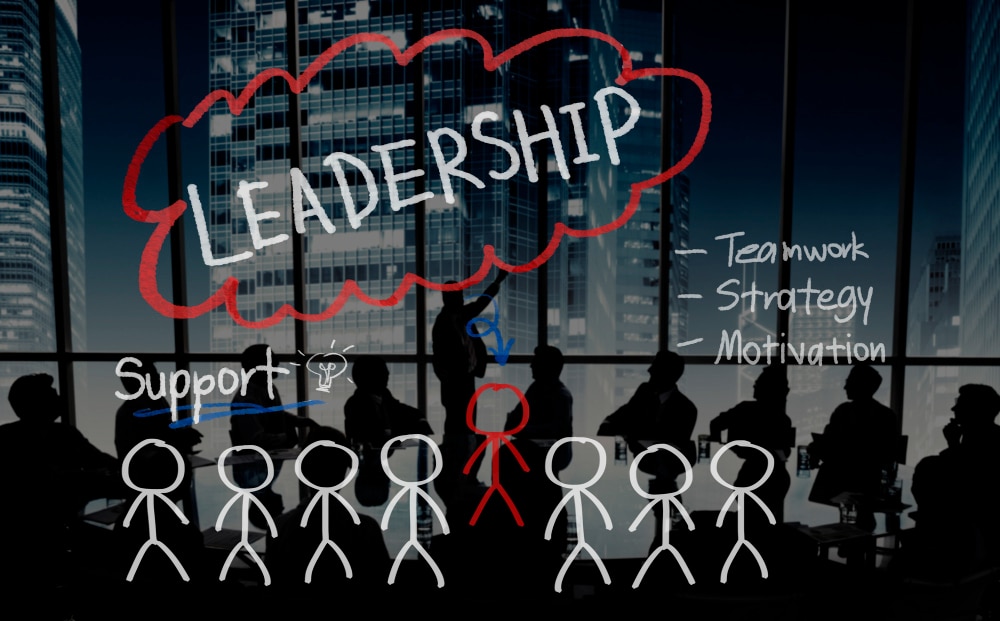Have you ever walked into an office filled with talented individuals working diligently on their tasks, but still noticed something was off? Projects are completed in shambles, the atmosphere is tense, communication is flawed, and there is no hint of effective collaboration. I can tell you for sure what is lacking: proper management. And one of the ways to manage this is by implementing relationship-oriented leadership. Relationship-oriented leadership, unlike task-oriented leadership, focuses on building strong connections in the workplace to drive results. Let’s go on to learn how you can incorporate this leadership style to boost productivity in your organization.
Key Takeaways
Relationship-oriented leadership prioritizes fostering strong interpersonal connections within the workplace.
Relationship-oriented leadership helps to build trust and foster collaboration in the organization, as well as improve employee engagement and satisfaction.
Relationship-oriented leadership involves:
- Familiarizing yourself with your team
- Open and transparent communication, and
- Leading by example
Understanding Relationship-Oriented Leadership
Relationship-oriented leadership, also known as people-centric leadership, prioritizes fostering strong interpersonal connections within the workplace. This leadership style is quite different from traditional task-oriented leadership, which solely focuses on achieving set goals. While relationship-oriented leaders are also focused on achieving results, they tend to achieve it by fostering trust, collaboration, and mutual respect among team members.
Why Relationship-Oriented Leadership Matters
#1. Building Trust and Fostering Collaboration
A survey conducted by Wellable shows that organizations with high levels of employee engagement experience 21% higher profitability. What does this tell you? Successful teams are built on a foundation of trust, which relationship-oriented leaders understand. You can unlock the full potential of your workforce by creating an environment of psychological safety and empowering team members to voice their ideas and concerns.
You should understand that employees are first human beings, and every human being likes to feel recognized. Employees are more willing to step outside their comfort zones, explore new ideas, and contribute to the organization’s success when they feel supported and valued by their leaders.
Developing authentic relationships with employees creates a sense of psychological safety, allowing team members to express their ideas, concerns, and feedback comfortably.
During the early stages of my career at a product research company, I had the opportunity to work with a manager who was actively committed to building personal connections with every team member. He fostered a supportive environment for collaboration by genuinely showing interest in our lives outside of work and actively listening to our thoughts and ideas. Thus, employees could give suggestions and provide meaningful solutions, knowing that their voices would be heard.
#2. Improving Employee Engagement and Satisfaction
According to a study by Gallup, companies with high levels of employee engagement see a 41% decrease in absenteeism and a 17% increase in productivity. Leaders who focus on relationships prioritize the growth and well-being of their team members, understanding that engaged and satisfied employees are more committed to achieving organizational goals.
The Impact of Relationship-Oriented Leadership on Organizational Success
#1. Fostering Innovation and Creativity
Employees who feel supported and valued by their leaders are more inclined to take risks, think outside the box, and contribute innovative ideas to the organization. Relationship-oriented leadership fosters a culture of psychological safety that promotes creativity and experimentation.
#2. Enhancing Employee Retention and Loyalty
Organizations can incur significant costs and disruptions due to employee turnover. Investing in relationship-oriented leadership practices increases employee retention rates and fosters a sense of loyalty and commitment among your team members. The more you value and support your employees, the more likely they are to remain in your organization for the long term.
Practicing Relationship-Oriented Leadership In The Organization

How do I practice relationship-oriented leadership if I’m not a people-centric person? Now, it just takes self-will and some effort to liaise with people. Here are some tips to guide you:
#1. Familiarize Yourself with Your Team
Understand each of your team members’ strengths, interests, and aspirations. This might prove to be difficult at first, but it’s worth the effort. Arrange frequent individual meetings to offer tailored assistance and guidance. Organize team-building activities or social events outside of work to strengthen bonds and build camaraderie among team members. If you’re managing a remote team, you can make them feel appreciated with these tips.
#2. Communicate openly and transparently
Encourage open dialogue and feedback from your team members to promote transparent communication. Inform them regularly about organizational changes, challenges, and successes, and show that you are ready to listen and address their concerns.
Practice active listening during conversations and meetings to fully understand the perspectives of your employees. Validate their perspectives and demonstrate empathy and understanding.
Read Also: EMPLOYEE RECOGNITION: Ultimate Guide To Employee Recognition Programs
#3. Lead by example

This is very important for any leader, regardless of the leadership style; it’s common knowledge that actions carry more weight than words. Set an example by demonstrating the behavior and values you expect from your team members. Show empathy, integrity, and authenticity in your interactions to foster a culture of mutual respect and trust.
Show your approachability and accessibility by being willing to roll up your sleeves and collaborate with your team.
Don’t hesitate to admit when you make mistakes or encounter challenges. Leverage these moments to show vulnerability and humility, as they can enhance trust and connection with your team.
Pros and Cons of Relationship-Oriented Leadership
Every leadership style has its pros and cons, and relationship-oriented leadership is not an exception. Here are some of the pros and cons of relationship-oriented leadership:
Pros
#1. Helps to build strong relationships

Building strong relationships and trust within a team is a key benefit of a relationship-oriented leadership style. More effective communication and collaboration can result, along with increased commitment and loyalty from team members. Leaders who prioritize relationships are usually skilled at managing team conflicts by emphasizing common ground and compromise.
#2. Motivates team members

This leadership style has a key advantage in motivating team members to achieve their best. Relationship-oriented leaders usually prioritize establishing a positive and supportive team environment. Greater job satisfaction and engagement from team members can lead to improved performance.
Read Also: What Is Employee Engagement: All You Need to Know.
#3. Helps build a stronger sense of community

Relationship-oriented leadership helps build a stronger sense of community within an organization. This leadership style promotes teamwork and cooperation over competition. Creating a positive and cohesive work environment can benefit both employees and the organization as a whole.
In contrast, task-oriented leadership styles prioritize results and goal achievement. Using this approach can be effective in certain situations, but it may also lead to team members feeling micromanaged or undervalued. Frustration and resentment can harm morale and motivation.
In general, a leadership style that focuses on relationships is more effective in fostering a positive and productive team environment.
Read Also: THE IDEAL WORK ENVIRONMENT: Things That Make up an Ideal Work Environment
Cons
As I said, this leadership style still has its drawbacks. First, the leader might struggle with making important decisions that will affect his relationship with the employees. Also, he will have to consider the employees and every other person involved before making decisions; thus, slowing down the decision-making process. Another big factor is that he will have to tolerate any sort of behavior from the employees in order not to breach their relationship.
Relationship-Oriented Leadership vs Task-Oriented Leadership
Relationship-oriented leaders and task-related leaders have one thing in common: results. However, their methods differ. It’s good to study the different approaches by which these two leaders approach their tasks:
#1. Objectives
Emphasizing task facilitation, structures, and achieving desired results, the task-oriented leadership style is focused on tasks. This leadership style emphasizes the systems that can enhance your team’s self-efficacy. Relationship-oriented leadership prioritizes the well-being and growth of team members.
Read Also: Transformational Leadership in Modern Business: Shaping the Future
#2. Decision-making
Task-oriented leadership typically involves top-down decision-making. Task leadership involves streamlining systems, setting clear deadlines, and providing team members with clear instructions and processes to enhance project performance and efficiency. Relationship-oriented leaders tend to be democratic and frequently use group decision-making techniques.
Read Also: Authentic Leadership: Meaning, Examples, Characteristics, Theories
#3. Skill sets
Task-oriented leaders provide clear directions and supervise systems to assist employees in achieving goals. Relationship-oriented leadership skills derive from one’s ability to hire diverse and creative staff who can get along, work collaboratively, and discover innovative solutions.
To see which organizational behavior is best for your company, try offering staff a questionnaire or changing up the style of leadership quarterly to test the effects of task and relationship-oriented leadership behaviors. One approach might lead to more robust performance and satisfaction.
Read Also: Mastering the Art of Strategic Leadership: A Comprehensive Guide to Developing Essential Skills for Success
Overcoming Challenges In Relationship-Oriented Leadership
As I mentioned earlier, every leadership style presents its unique challenges. We have seen some of the challenges that result from relationship-oriented leadership, and here are some steps for overcoming these challenges:
#1. Dealing with Resistance to Change
When implementing new leadership styles or organizational initiatives, it is natural for people to resist change. To tackle this challenge:
- Highlight the benefits: Explain why the shift towards relationship-oriented leadership aligns with the organization’s values and goals. Emphasize the positive influence it will have on team dynamics, productivity, and employee satisfaction.
- Provide support: Provide training, coaching, and resources to assist team members in adapting to the new leadership approach. Openly and transparently address any fears or concerns, reassuring employees that their voices are heard and valued.
#2. Conflicts Management
Conflicts inevitably arise in any workplace, posing a particular challenge within a relationship-oriented leadership framework. Promote open communication and ensure team members actively listen to each other. Use conflict resolution techniques like mediation, negotiation, and compromise to handle disagreements effectively and reach mutually acceptable solutions.
#3. Achieving a Balance Between Relationships and Results
Balancing relationships and achieving organizational goals requires finesse. To achieve this balance:
- Define performance expectations and goals clearly, while also highlighting the significance of fostering strong relationships within the team. Emphasize the importance of leadership that focuses on people and delivers tangible results.
- Demonstrate a commitment to both relationships and results in your leadership style by leading by example. Empathize with and support your team members while also ensuring they are accountable for their performance and contributions to the organization.
Here’s a checklist you can always refer to at any time:
What Is The Relationship-Centered Theory of Leadership?
The relationship-centered theory of leadership emphasizes building strong interpersonal connections, trust, and collaboration to drive team success and organizational effectiveness. It prioritizes empathy, communication, and mutual respect among team members.
What Are Relationship-Oriented Skills?
Relationship-oriented skills encompass empathy, active listening, communication, collaboration, conflict resolution, and trust-building. They focus on nurturing connections, fostering teamwork, and promoting mutual respect in interpersonal interactions.
Read Also: WHAT ARE LEADERSHIP SKILLS? The 7 Core Skills Of A Leader
Who Created Relational Leadership Theory?
Relational leadership theory was developed by Mary Uhl-Bien and Sonia M. Ospina, focusing on the importance of relationships, connections, and networks in leadership dynamics.
In Conclusion
Today’s rapidly evolving business landscape requires leaders to nurture meaningful connections and foster a culture of trust, collaboration, and mutual respect. Embracing relationship-oriented leadership principles unlocks your teams’ full potential and paves the way for sustainable success in the years ahead.
- To 20+ BUSINESS SKILLS: For Resume, Leadership, Management & Training
- LEADERSHIP DEVELOPMENT: Process, Strategies & Importance
- LEADERSHIP STRATEGIES: Most Effective Strategies, Examples & Books
- COMMUNICATION STRATEGIES: 11+ Effective Strategies To Use at Work






